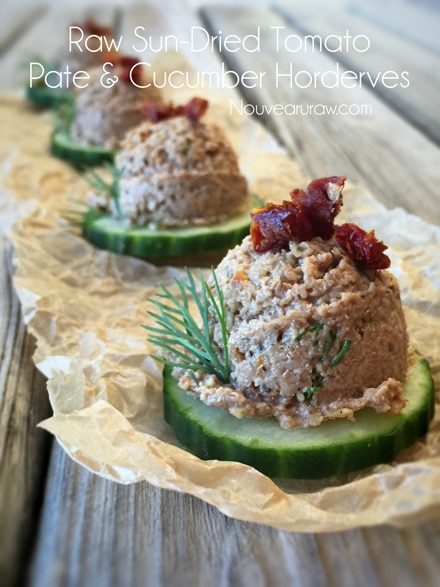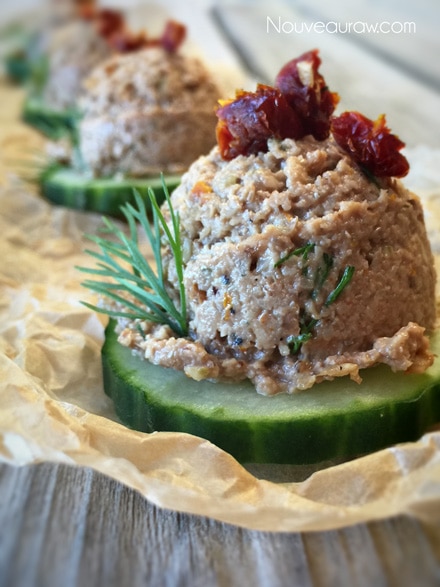


 Add to favorites
Add to favorites
~ raw, vegan, gluten-free ~
Whether you refer to them as hors-d’oeuvre (Hors d’oeuvre), canapés, appetizers, tapas, tiny foods, or just good ole’ snicker-snacks… I am here to confirm that delicious-nutritious things come in small packages.
Just in case you’ve ever been confused about party food lingo, here are a few short definitions to help you sort it all out… and also keep in mind that you want to avoid items that are drippy, sticky or potentially messy. Your guests should be able to handle and eat them easily.
Canapés is a French term meaning “couch.” They are small, decorative, bite-sized items that traditionally have three parts: a base such as crostini, cucumber disc or a cracker, the main element (example, pate) and a garnish or sauce on top. Think of it as a more layered or complex bite. They are typically savory and can be served warm or cold.
Bite-sized morsel before a meal, and usually referred to as a finger food. Prepare to sustain guests while the main courses were being prepared. Typically an hors-d’oeuvre is one or two bites in size. Portion sizes of ½ to 1 oz of food is more than enough. They can be served at long parties that occur after a regular meal time. Or as a mid-afternoon party where there is no intent to serve dinner, or an evening party that occurs after dinner.
Amuse-bouche is typically a little treat sent out by the chef at a restaurant to welcome guests while they decide what to eat. These are usually one-bite morsels to tease the palate at the beginning of a multi-course meal… simply miniature versions of full-sized dishes. A recipe that makes four full-sized servings can probably produce 12-15 miniature servings. An example would be a small soup or puree served in a single shot glass portion.
They are not actually considered an hors-d’oeuvre as they are created to harmonize with the following courses of the meal (multi-course menu). They are slightly larger than the amuse-bouche and often require utensils to eat, rather than just being finger food.
Refers to an offering of many small, shared dishes of snacks or appetizers. Tapas can be served warm or cold, and are typical of Spanish cuisine. Often they are informal and are commonly eaten standing up. The main course typically doesn’t follow, making the tapas the main even for food served.
Crudites are raw vegetables sliced into thin strips, usually one bite-size (to discourage double-dipping) and served with an accompanying dip or sauce. Ever been asked to bring a veggie platter? Same thing… and even though they are simple and fuss-free in ingredients, they manage to be the prettiest thing on the table. If you want to dress up a platter of crudites, add fresh edible flowers and herbs. I like to make my crudites/veggie platters the center of attention by creating veggie bouquets. I designed an e-book to walk you through how to make them step by step if interested. :) Click (here) to order the ebook.
 Ingredients:
Ingredients:Yields 1 3/4 cups
this recipe sounds great! i love when you find a recipe that is good enough meat meat eatters enjoy and have no idea they didnt eat raw or vegan.
I am right there with you Elaine :) Have a wonderful day and many blessings through the holiday season. amie sue
is sesame tahini the same as tahini butter?
Yes you are correct Granny :)
thank you